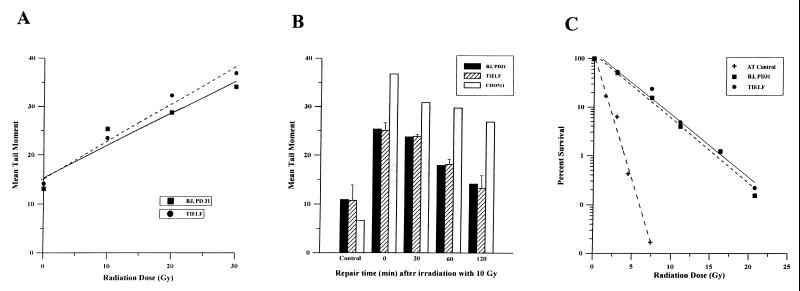FIG. 4.
Responses of BJ31 and TIELF cells to ionizing radiation: generation of DNA double-strand breaks (A), rejoining kinetics of double-strand breaks (B), and clonogenic survival after low-dose rate irradiation (C). In all assays BJ31 and TIELF cells behave identically. (A) Ionizing radiation dose versus tail moment of BJ31 and TIELF cells as measured immediately after irradiation by the neutral comet assay. (B) Mean tail moment as a function of time after a dose of 10 Gy in BJ31, TIELF, and positive-control CHO511 cells (Ku-70 deficient), which have impaired DNA repair and show higher tail moments. (C) Clonogenic survival as a function of ionizing radiation dose. Cells were irradiated with 60Co gamma rays at a low dose rate of 0.025 Gy/min at 37°C. This dose rate was chosen to be low enough that cell survival could be influenced by repair of radiation damage occurring during the treatment. Two million cells were grown to confluency. Following irradiation the cells were held at 37°C for 24 h before being trypsinized, counted, diluted, and plated for colony formation. Survival was calculated by using the cell count obtained just prior to plating. The cells were plated for a colony formation assay and then incubated for 10 to 14 days before being stained. Colonies containing more than 50 cells were counted. Survival was expressed as the ratio of the plating efficiency of the irradiated cells to that of control cells.

